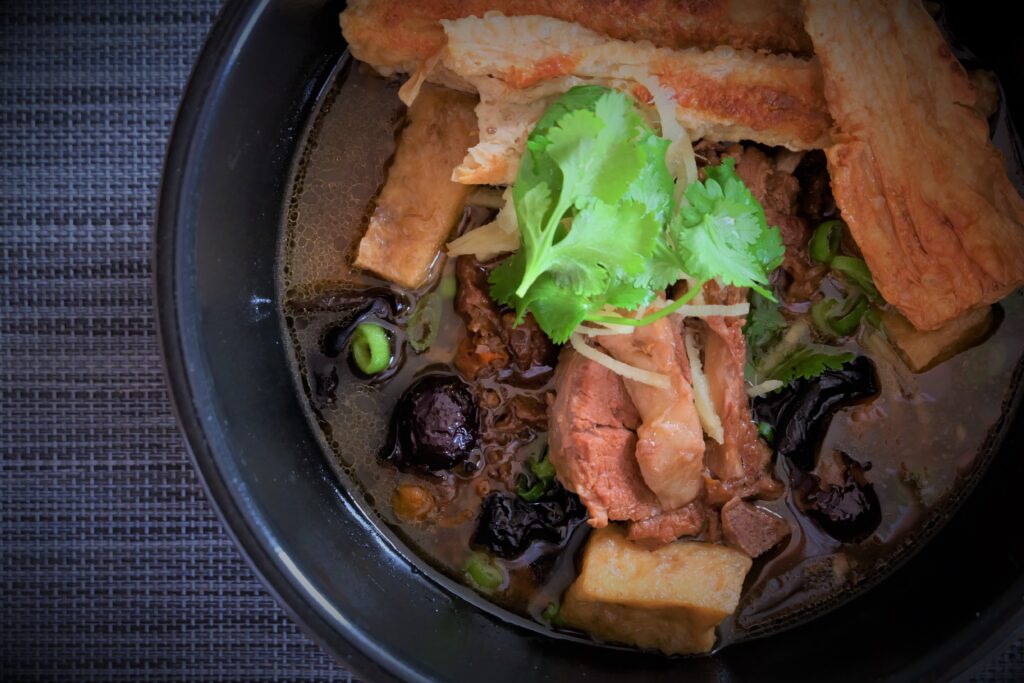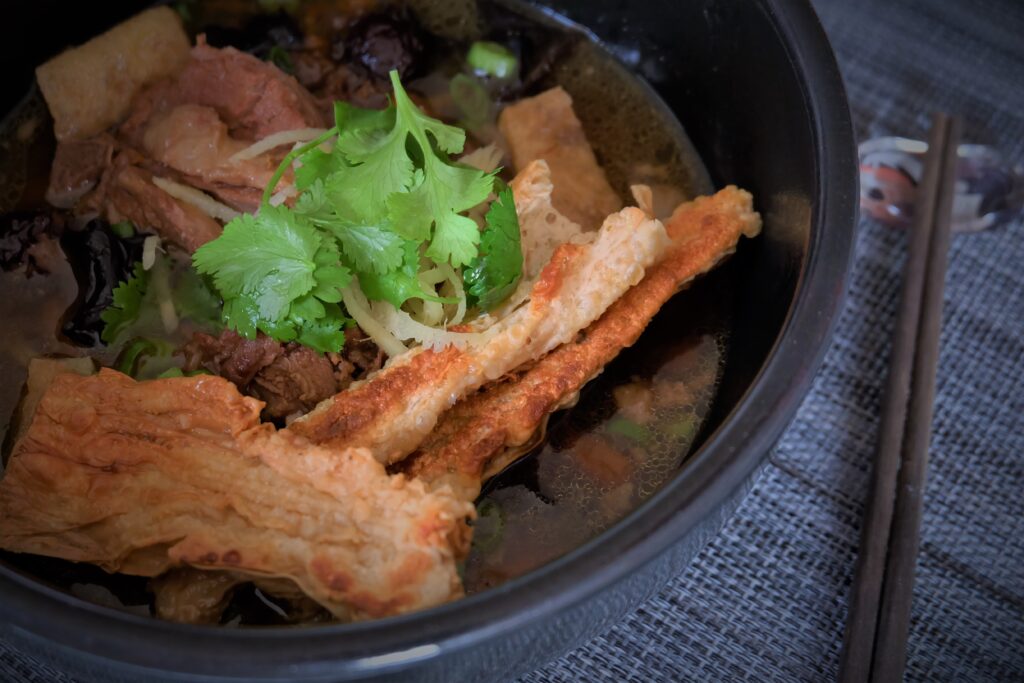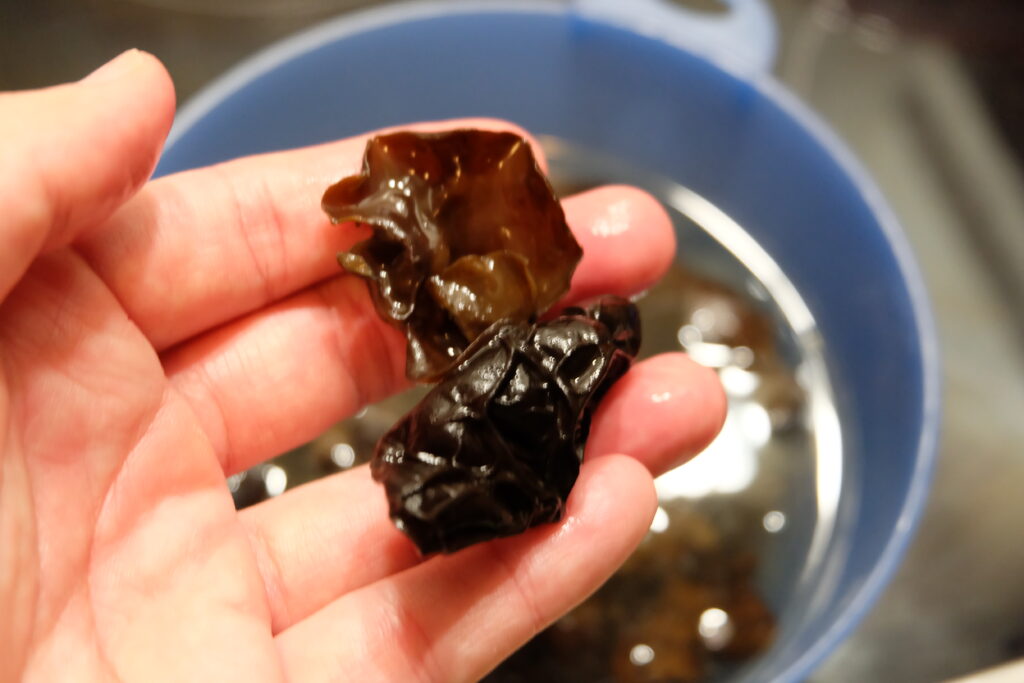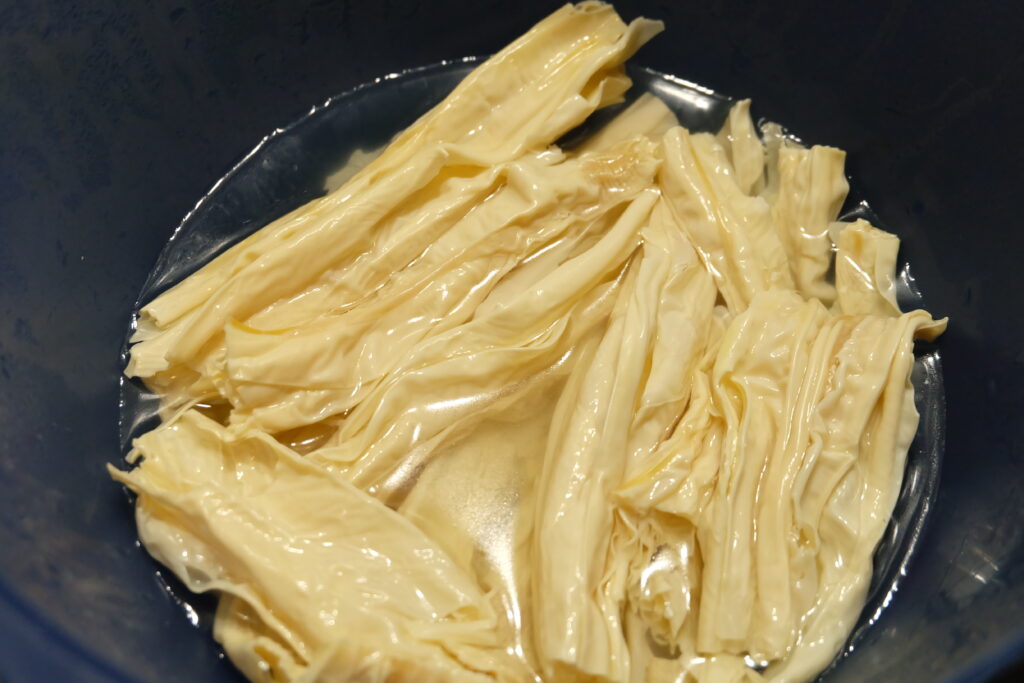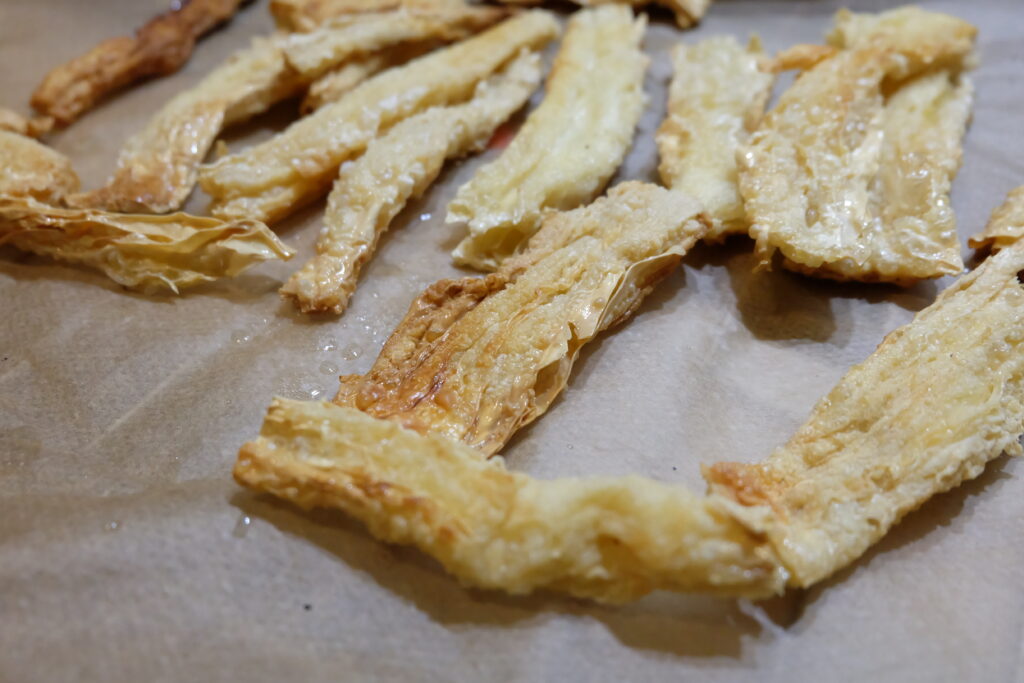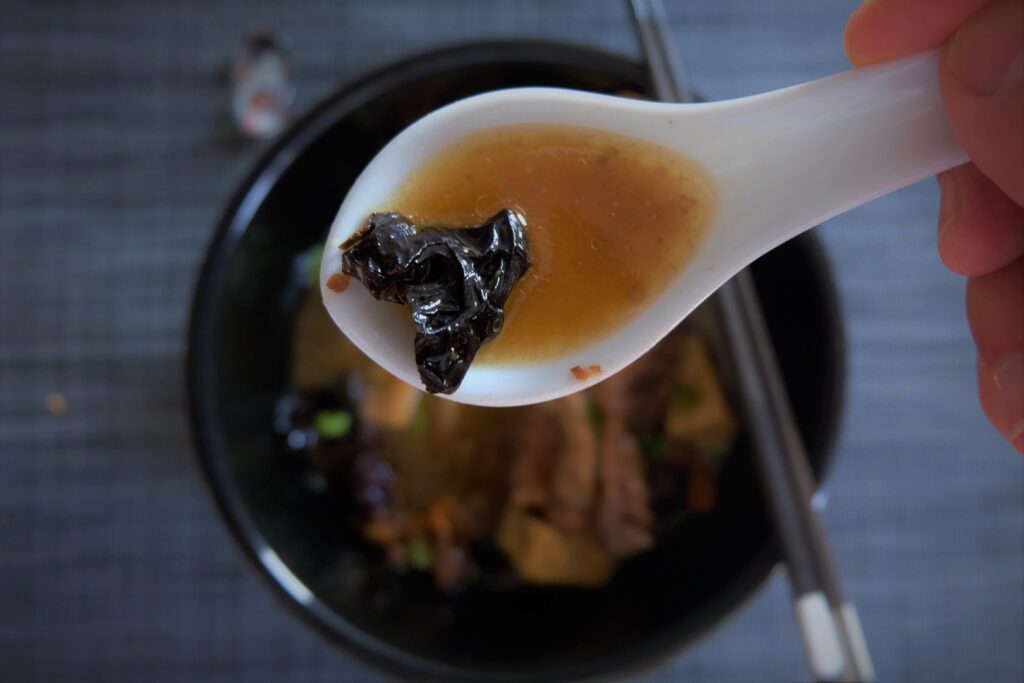The Hainanese Herbal Mutton Soup 海南羊肉汤 is such a classic, that is fast fading into oblivion. As our society has globalised so much, traditional dishes sometimes move into the background running the risk of fading into oblivion, as tastes change and evolve when influences from other cuisines grab our attention. This soup is the taste of my childhood. By posting this here, I hope others will take it up again so that we remember the cooking of our forebears.
A word about Hainanese cuisine
The island of Hainan 海南 is the only tropical region of China. Located at the same altitude as Vietnam to its west, Hainan cuisine – also known as Qiong cuisine 琼菜 – is the only Chinese regional cuisine that uses southeast Asian ingredients such as coconut. The most famous dish of Qiong cuisine is of course the Hainanese Chicken Rice known locally as the Wenchang chicken 文昌鸡. Goat is likewise a very popular meat in Hainan, especially its local black Dongshan goat 东山羊 bred in the city of Wanning 万宁. This dish – Hainanese Herbal Mutton Soup 海南羊肉汤 – would have used the meat of the Dongshan goat.
What is so special about the Hainanese Herbal Mutton Soup 海南羊肉汤?
First of all, the Hainan diaspora in Southeast Asia spread Qiong cuisine to countries like Taiwan, Singapore, Malaysia and Thailand, bringing typical Hainan recipes that have been integrated into the local cuisines. The Hainanese – being tropical and maritime people – are skilled sailors. So much that the British employ Hainanese men in the British Navy. When the British retreated from Southeast Asia, many of these Hainanese sailors opened up Western food eateries serving pork chops and roast beef from what they had learnt earlier from the British.
Of course, this Hainanese Herbal Mutton Soup 海南羊肉汤 has nothing to do with the British colonisation. But it has everything to show how the Hainanese are quite unique in their food culture amongst the Chinese peoples. They mix medicinal roots from temperate climate in the north, and spices from Southeast Asia in the south, and combine them into a wonderfully aromatic dish featuring a unique local meat.
For those unfamiliar with Chinese medicinal roots, I have provided their common English names where available and the Mandarin Pinyin names in addition to their scientific names.
This recipe was not developed by me alone. I owe it to the Meatmen and 有你 UNI. Please visit their sites for their versions of the dish.
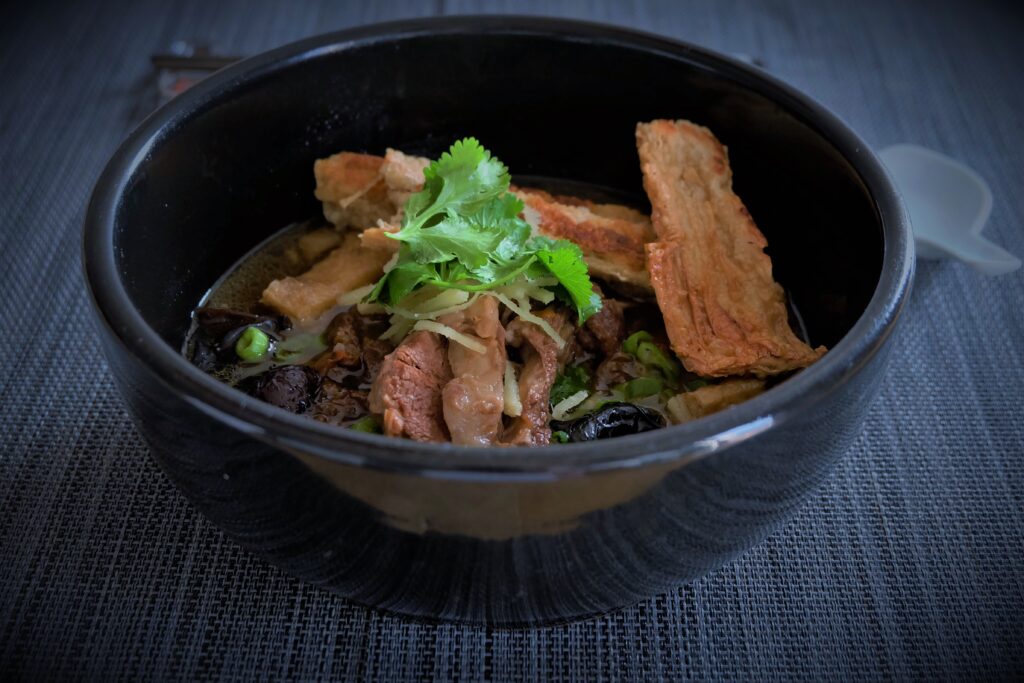
Serving: 4 persons
Ingredients:
- 700g or 6-8 lamb/goat shanks
- 200g frozen lamb/goat carpaccio, 300g (optional)
- Star anise/Bajiao 八角, 5 pieces
- Clove/Dingxiang 丁香, 1 tsp
- Dangshen 党参 [Radix Codonopsis], 5 pieces
- Dangguo 当归 [Angelica Sinensis], crushed, 2 pieces
- Yuzhu 玉竹 [Polygonatum odoratum ‘(Mill.) Druce’], 5 slices
- Chinese Liquorice/Gancao 甘草 [Glycyrrhiza uralensis ‘Fisch’], 5 slices
- Chinese Cinnamon/Guipi 桂皮 [Cinnamomum tamala ‘(Bauch.-Ham.) Nees et Eberm’], 1 roll
- Huangqi 黄芪 also called Beiqi 北芪 [Astragalus mongholicus ‘Bunge’], 3 slices
- Black or White pepper grains, crushed, 1 tbs
- 3 cloves garlic for soup, crushed
- 3 cloves garlic for marinate, finely chopped
- 5cm fresh ginger for soup, crushed
- 10 slices of fresh ginger for marinate
- Chinese red fermented beancurd/Nanru 南乳, 2 cubes
- Vegetable oil, 5 tbs
- Dried black woodear/Mu’er 黑木耳, 15 pieces
- Jujube dates/Hongzao 红枣, 12 pieces
- Red Wolfberries/Gouqi 枸杞, 100g
- White Chinese Rice Wine 白米酒, 400ml
- Fried tofu puffs “Aburaage“/Taopok 豆卜, halved, 10 pieces
- Salt and pepper to taste
Garnishing:
- Dried Yuba Sticks/Fuzhu 腐竹, 6 sticks
- Finely julienned fresh ginger, 10 slices
- (liberal amounts of) Coriander leaves
Tool:
- Herb bag
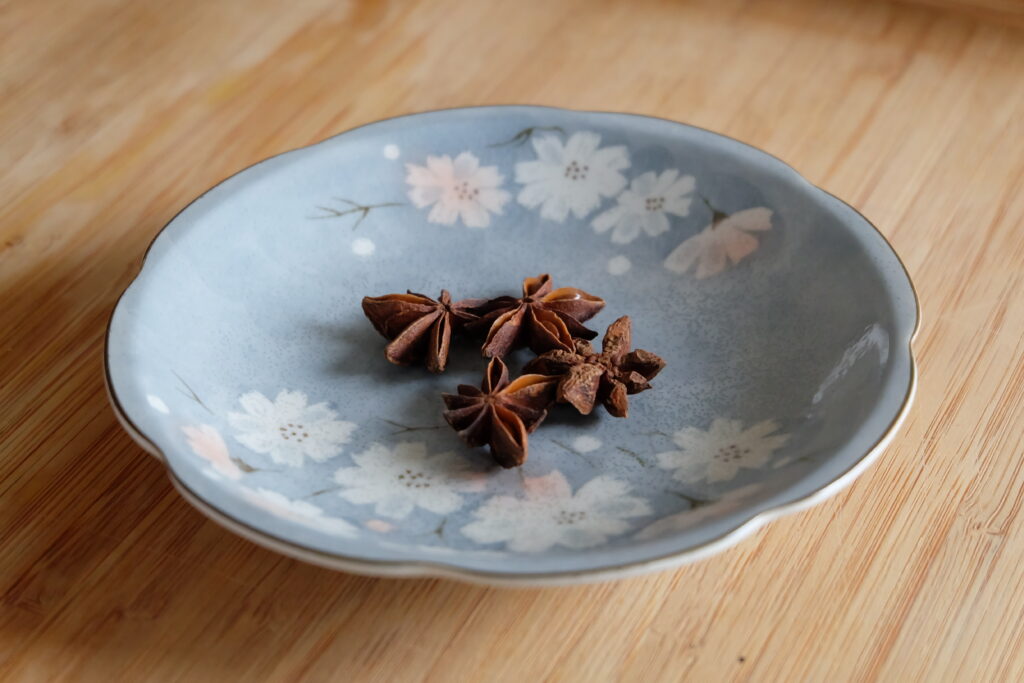
Star anise/Bajiao 八角 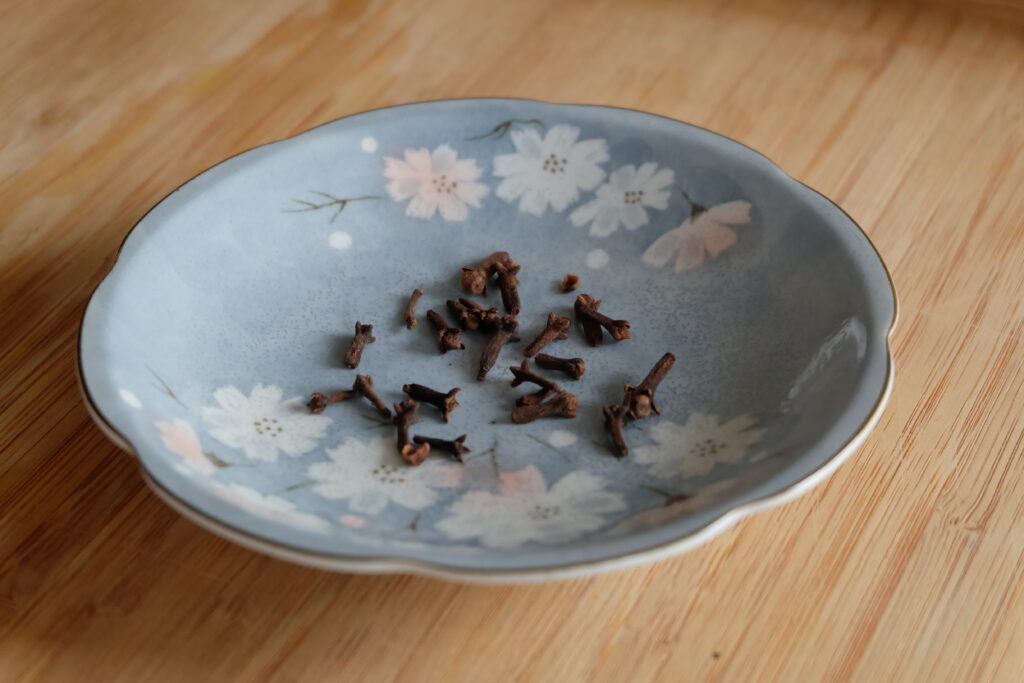
Clove/Dingxiang 丁香 
Dangshen 党参 [Radix Codonopsis] 
Dangguo 当归 [Angelica Sinensis] 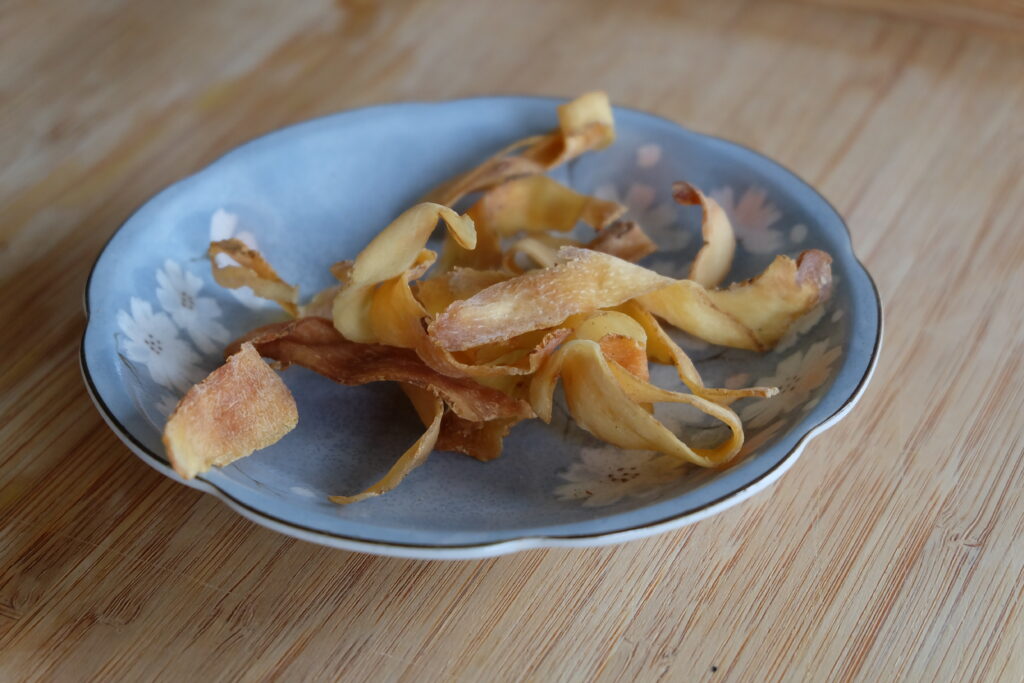
Yuzhu 玉竹 [Polygonatum odoratum ‘(Mill.) Druce’] 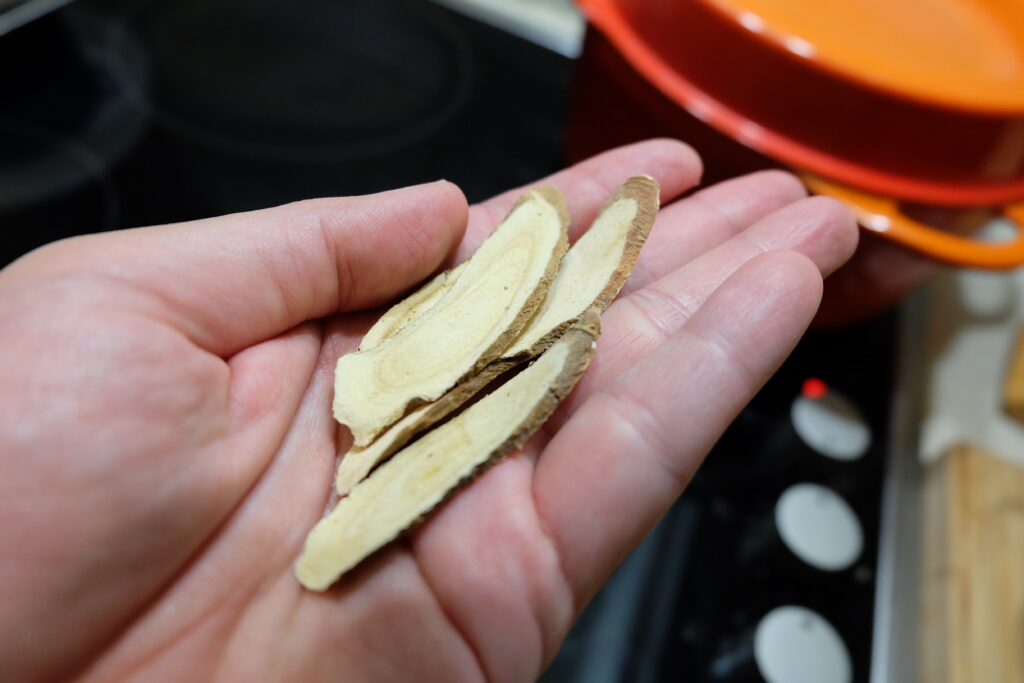
Gancao (Chinese Liquorice) 甘草 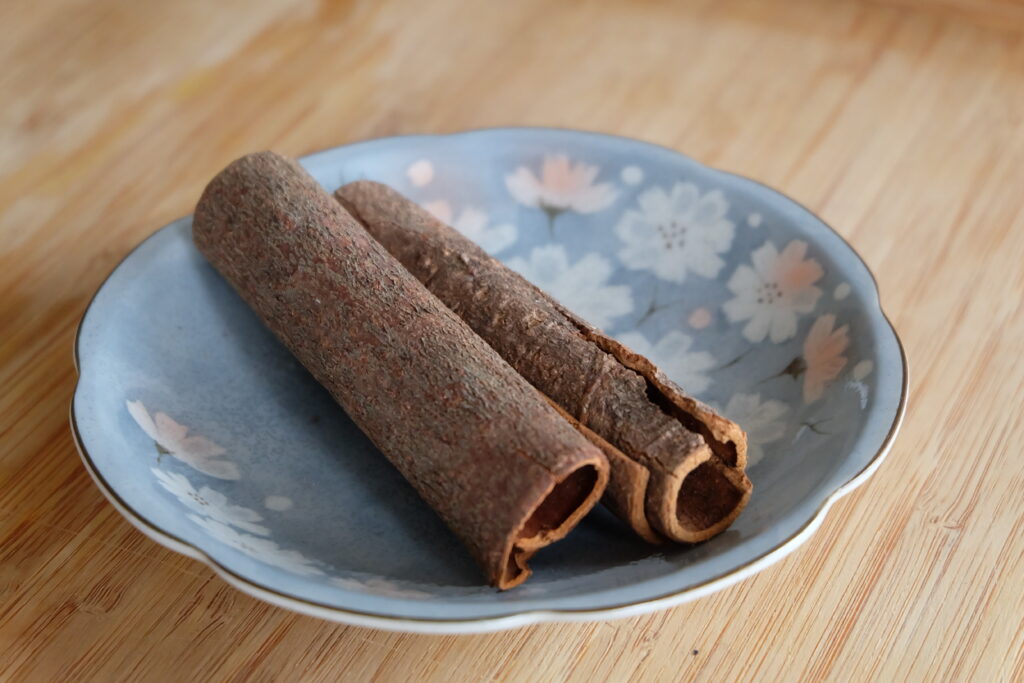
Guipi (Chinese Cinnamon) 桂皮 [Cinnamomum tamala ‘(Bauch.-Ham.) Nees et Eberm’] 
Huangqi 黄芪 also called Beiqi 北芪 [Astragalus mongholicus ‘Bunge’] 
pepper grains 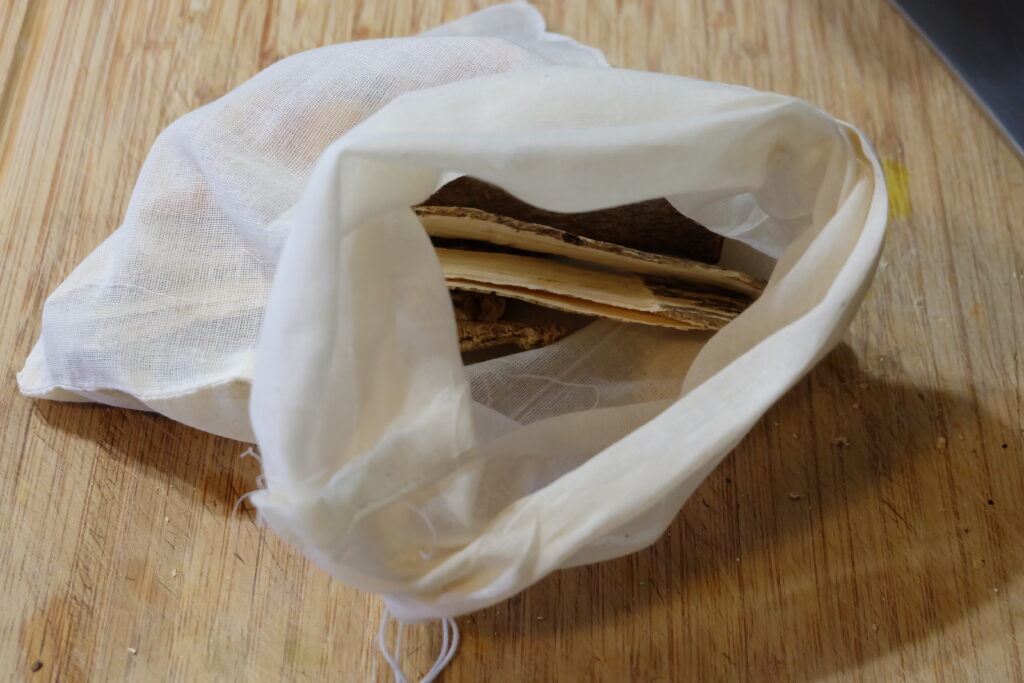

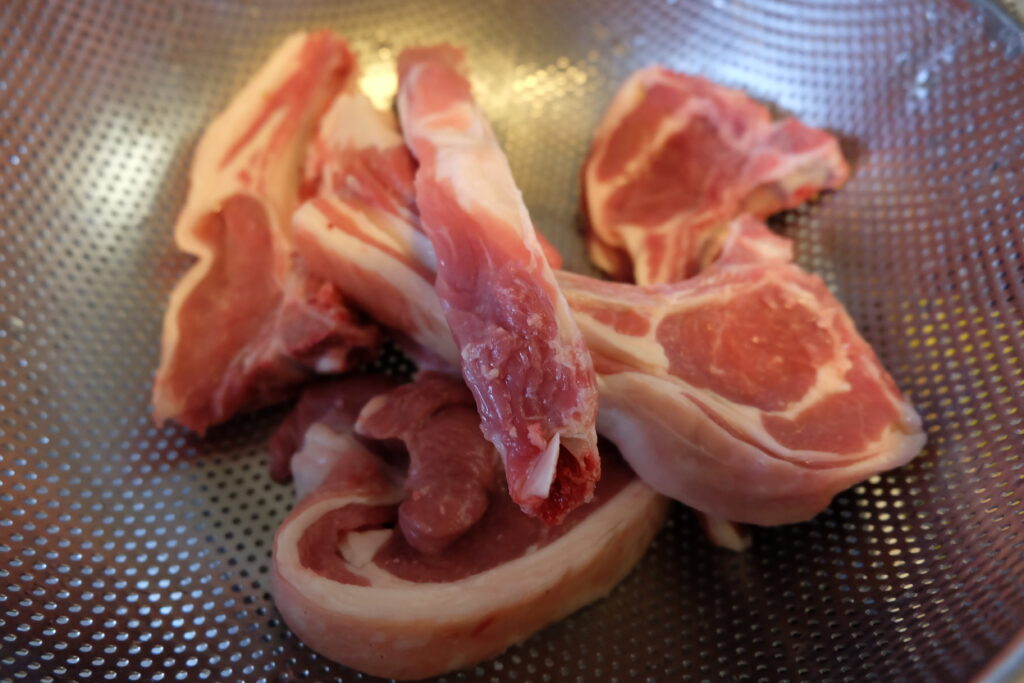
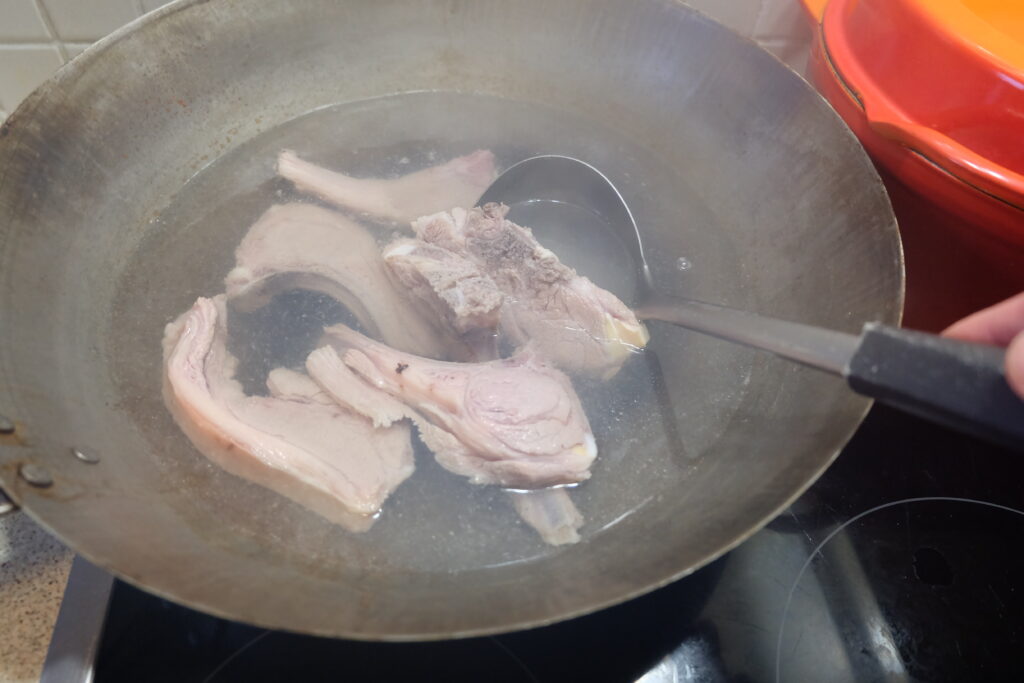
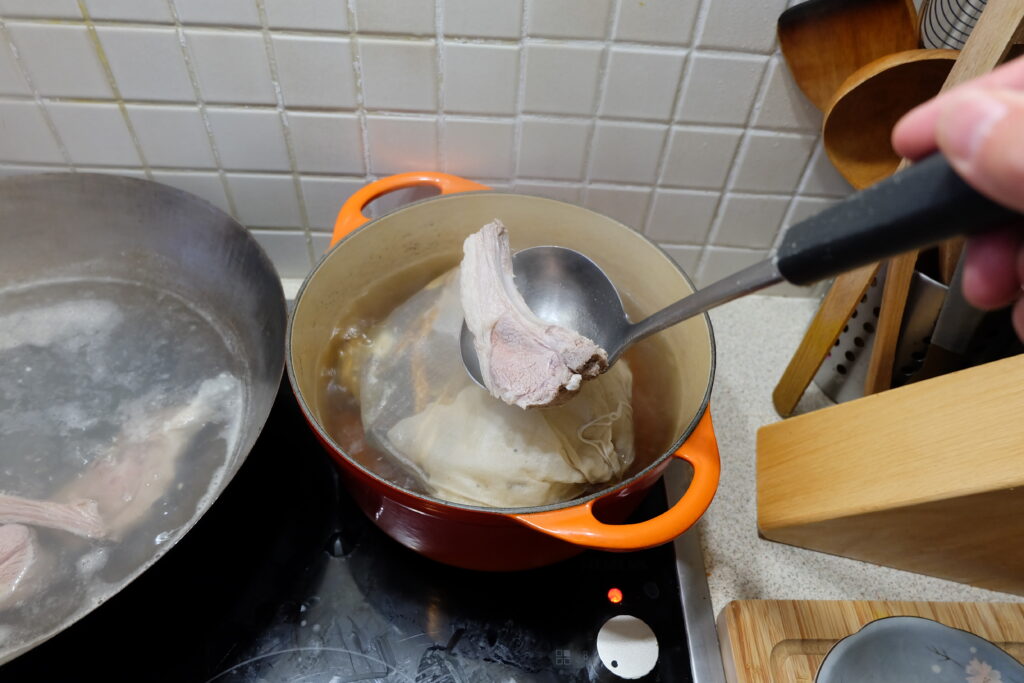
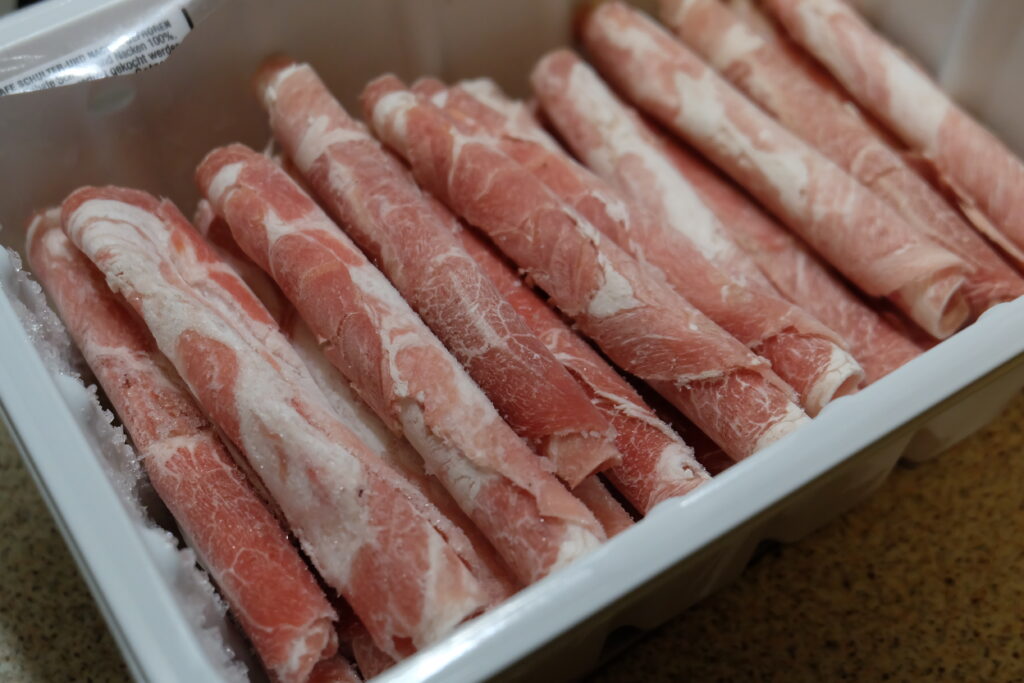
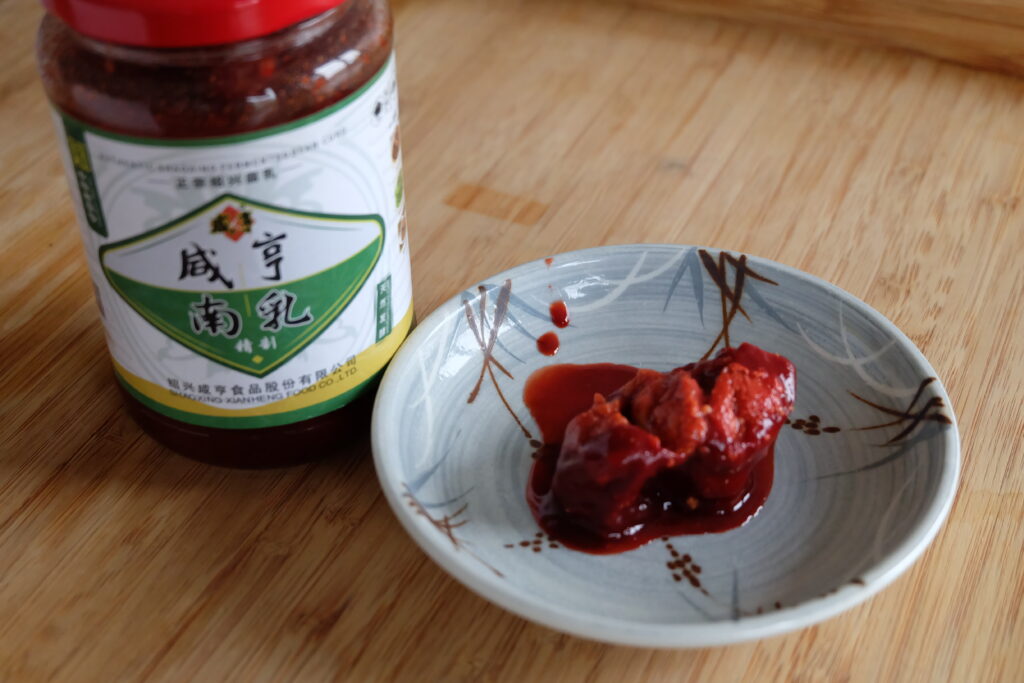
Nanru (Chinese red fermented beancurd) 南乳 



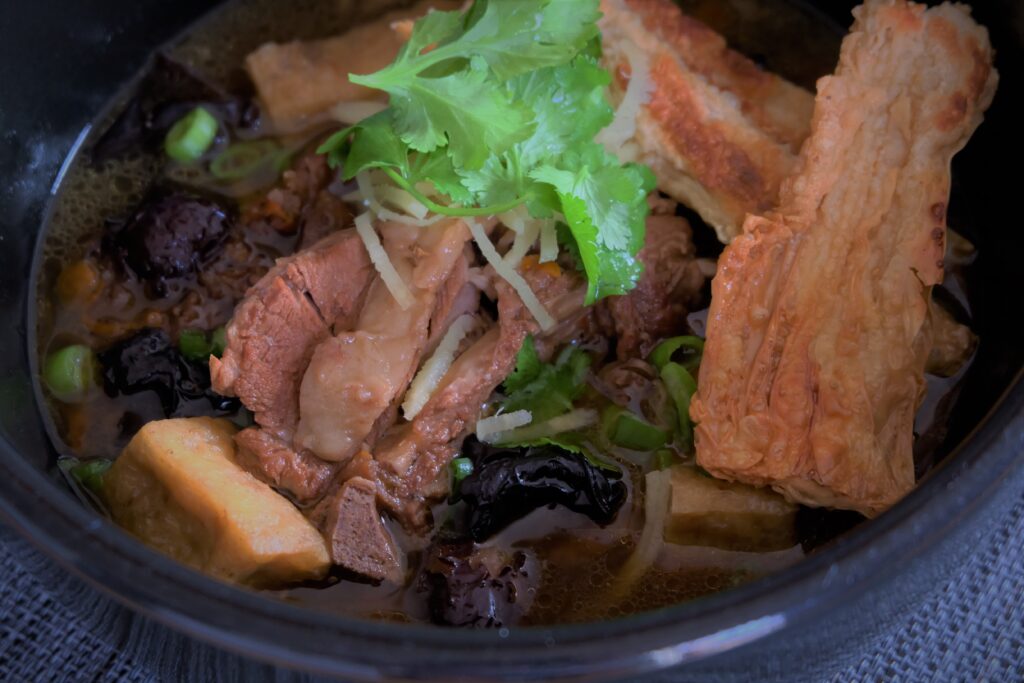

Instructions:
- Bring to boil 3l of water in a big pot, place the well-tied herb bag filled with all the medicinal roots plus garlic and ginger in.
- Blanche your mutton shanks in boiling water and place them in the soup. Cover and simmer on low heat for 2.5 hours.
- Meanwhile rehydrate the dried Yuba sticks and black woodear separately in warm water (50 degrees celsius) for 1 hour. Dry your rehydrated Yuba sticks and deep-fry them in oil. Set aside.
- Dry your rehydrate black woodear and tear or cut into strips. Set aside
- Once your soup is ready, turn off the fire and take out the mutton shanks. Marinate the mutton shanks (together with the carpaccio) with nanru cubes for 5 minutes.
- In a wok, heat up some oil and stir-fry some garlic and ginger on high heat then add in your marinated mutton and stir fry for 5 minutes on medium heat. Leave to rest for 10 minutes.
- Take out the herb bag of the soup and turn on the fire on high heat and bring it to boil.
- Add in your stir-fried mutton, jujube dates, wolfberries, black woodear, white rice wine, tofu puffs and 1 tbs salt (according to taste). Cover and simmer on medium heat for 30 minutes.
- In a serving bowl, place a portion of the soup, decorate with fried yuba, fresh ginger and coriander leaves.
Tips:
- Herb bag: If you don’t have one, you will have to filter the soup.
- Mutton – goat or lamb?: They are interchangeable. In Hainan, it would have been goat. But you can use lamb instead.
- Carpaccio: I personally like slices of meat in addition to the chunky pieces. Hence it is optional.
- Jujube dates make the soup sweet. If you prefer a more savoury take, reduce amount by half.
- Nanru: These taste gloriously umami, and the red comes from the ingredients not chili. Please do not use spicy version. If you cannot find red Nanru, use the white one instead. This makes the soup reddish and cloudy. Some people don’t like this additional flavour, so feel free to omit.
- Fried Yuba: Some people prefer this to be already cooked in the soup instead of having it crunchy. If so, add this into the soup before serving to soften it.
- Spicy dip sauce: In Singapore and Malaysia, the dip sauce served with this soup is made with ground-up red bird eye’s chili, garlic, ginger and calamansi juice.
